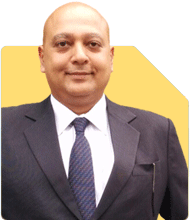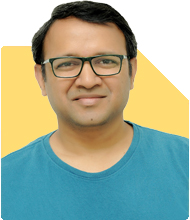Dear sir,
I am 43 old , gwtting salary 89,000/-. Toom a home loan rs.30 lacs recently to buy home which is given on rent. Also mothly 14k mutual funds. 3k Rd, 50lacs term insurance, ppf -10 lacs and some 10 lacs of life insurance. Please give me advice further how can i improve my wealth.
Ans: You are already managing many aspects of your finances with discipline. At 43, it is the right time to fine-tune your strategy to build wealth for the long term. Let us examine your current structure and create a 360-degree plan for your financial growth.
Current Financial Picture – Let’s Review
You have a good starting point already:
Monthly salary: Rs. 89,000
Home loan: Rs. 30 lakh, property is rented out
Mutual Fund SIP: Rs. 14,000 monthly
Recurring Deposit (RD): Rs. 3,000 monthly
Public Provident Fund (PPF): Rs. 10 lakh already invested
Term Insurance: Rs. 50 lakh coverage
Life Insurance: Rs. 10 lakh (likely traditional policy)
Your intention to grow your wealth is strong. Now let’s evaluate what can be adjusted or improved.
Cash Flow Assessment – Know Your Numbers
Your monthly income is Rs. 89,000. From this, following goes into investments:
Rs. 14,000 to mutual funds
Rs. 3,000 to RD
That totals Rs. 17,000 monthly. This is around 19% of your salary. While this is good, you should aim for 30% if possible.
Rent from property adds income. But don’t count it for daily expenses.
Use it to partly offset home loan EMI or reinvest elsewhere.
Your Mutual Fund SIP – Check Allocation Mix
You are investing Rs. 14,000 monthly in mutual funds.
But key question is: What type of funds?
If you are investing mostly in small cap or thematic funds, rebalance it.
You must include large cap and diversified equity as well.
You must also include balanced advantage funds.
Don’t hold more than 4–5 schemes in total.
Avoid index funds due to zero flexibility and lack of downside protection.
Actively managed funds give better stock selection in market corrections.
If you are using direct mutual fund platforms, stop now.
Invest through regular plans via MFD who holds CFP credential.
They help you with rebalancing, reviews and tax support.
Direct plans may look cheaper but lack expert involvement.
Mistakes in fund choice or exit timing can cost you more later.
PPF Investment – Very Good Long-Term Pillar
You already have Rs. 10 lakh in PPF. That’s excellent.
Continue investing Rs. 1.5 lakh yearly, if possible
It gives tax-free returns and helps in retirement corpus
PPF is safe and suits long-term financial security
Don’t treat PPF as emergency money. Let it grow undisturbed till age 60.
Life Insurance – This Needs Correction
You said you have Rs. 10 lakh in life insurance.
If these are traditional or endowment plans, they are not wealth creators.
Returns are very low, often below inflation.
Also, they mix insurance and investment. That is not good.
What You Should Do:
Check policy surrender value.
If the loss is minimal, stop paying further premiums.
Surrender the policy and reinvest that amount into mutual funds.
Insurance should be only through pure term plan.
You already have Rs. 50 lakh term cover. That’s good.
Consider increasing it to Rs. 1 crore. You still have earning years left.
Term plan premium is small but gives full protection to your family.
Home Loan – Plan Smartly
You have taken Rs. 30 lakh home loan. That is fine.
It is good that the house is rented. That gives extra cash.
But rental income is usually 2–3% of property cost.
And loan interest is 8–10% or more.
So this is not a wealth creator right now.
Still, use the rent wisely.
Key Suggestions:
Don’t use rent for lifestyle.
Use it to part-prepay home loan every year.
Ask bank to reduce tenure, not EMI.
This reduces interest cost greatly.
Try to finish loan before retirement age.
Prepayment every year, even if small, helps you save a lot of interest.
Recurring Deposit – Reduce It Gradually
You are investing Rs. 3,000 monthly in RD.
RD gives low returns (6% or less)
After tax, returns are even lower
Instead, shift slowly from RD to mutual funds
You can stop RD and add Rs. 1,000–2,000 more to SIP.
Equity mutual funds give much better long-term growth.
RD is fine for short-term needs. But not for wealth building.
Emergency Fund – Have You Built It?
You must keep 6 months’ expenses as emergency fund.
This can be in liquid mutual funds or sweep-in FD.
Don’t depend on RD or PPF for emergency use.
Estimate your monthly expenses and save 6x that in a safe instrument.
Emergency fund avoids stress during medical or job issues.
Retirement Planning – Act Now, Not Later
You are 43 now. Retirement is 15 years away.
It is important to act now and build your retirement fund.
Keep SIP running and increase it by 10% every year
Don’t break long-term funds unless it is urgent
Ensure your investment mix is 60–70% equity, rest in PPF and debt
Keep reviewing funds every year with MFD + CFP guidance
Use mutual funds for growth, PPF for safety and term plan for protection.
Additions You Should Plan Now
Health Insurance for yourself and family. If already taken, review sum insured.
Increase SIP gradually. Target Rs. 25,000 monthly over next 2 years.
Stop any future LIC or ULIP plans. Don’t mix insurance and investing.
Use rent income to repay home loan and increase equity investments.
Also, avoid taking loans for travel, gadgets or family functions.
Your salary must create future wealth, not just fulfil present wants.
Check These Things Every Year
Track mutual fund growth and do yearly rebalancing
Check term plan coverage. Increase if salary increases
Revisit health insurance cover regularly
Make will or nomination for all assets
Review asset allocation: equity, debt, gold – adjust when needed
Avoid chasing “hot” fund themes like AI, pharma, etc. blindly
Stay in core diversified equity funds with strong track record.
Review portfolio only once or twice a year. Not every week.
Finally
You are on the right track. You are saving and investing already.
You are also paying your loan on time. That’s a good discipline.
Now you need to improve the quality of investments.
And also increase the savings percentage step by step.
Here’s your action plan from here:
Stop RD slowly and increase SIP
Check and surrender poor life insurance plans
Continue PPF every year till retirement
Use rent income to part-prepay home loan
Review your mutual fund portfolio with help of MFD + CFP
Increase term cover to Rs. 1 crore if affordable
Build emergency fund of 6 months’ expenses
Set clear goal: retirement, child’s higher education, or passive income
Stick to plan. Don’t chase quick returns.
You don’t need 20 funds. You need 4–5 good ones, reviewed yearly.
And you don’t need to work harder, just let your money work smarter.
Best Regards,
K. Ramalingam, MBA, CFP,
Chief Financial Planner,
www.holisticinvestment.in
https://www.youtube.com/@HolisticInvestment























